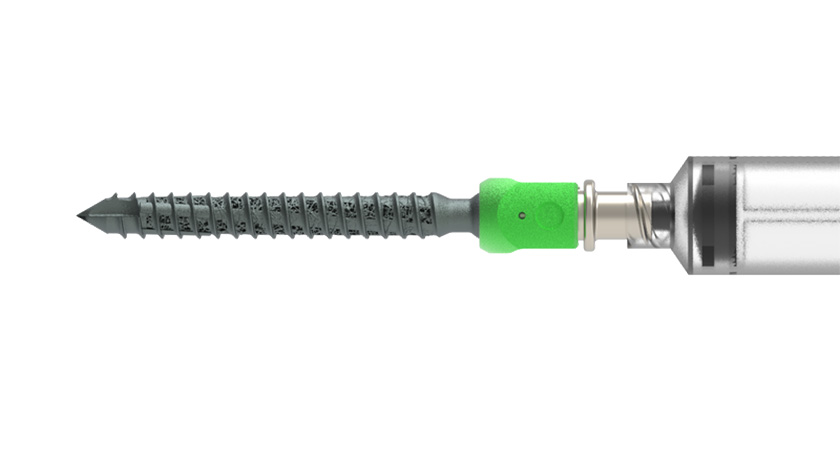
Orthopedic supply chains are highly complex to navigate under even ideal conditions. Add a pandemic along with environmental, economic and geopolitical issues, and supply chain management becomes exponentially more challenging for orthopedic device companies. At this year’s OMTEC conference, a panel of industry experts shared their thoughts on best practices, advice on ways to remain agile in the face of a crisis, and what the future may hold for supply chains fueling the orthopedic industry.
“Communication upstream and downstream is hugely important,” said Tom Norman, Chief Operating Officer at Skeletal Dynamics and moderator of the panel discussion. “That’s a theme you’ll find among our panel.”
Stay Connected with Your Suppliers on Inventory Needs
Stacey Christensen, Director of Operations for OsteoCentric Technologies, noted that lead times have tripled or quadrupled in some cases, but the expectation of the surgeon and hospital remains the same. She shared her advice of getting involved as early as possible with projects in an attempt to predict what will be needed downstream, so as to avoid delay in the manufacturing of implants and instruments.
“The best thing we can do is try to communicate with our suppliers as soon as we possibly can as to what we’re going to need, whether that be raw material, gauging, tooling,” she said. “We try to let them know early on in the project so that they’re prepared downstream. When they get that order, they can start manufacturing instead of getting it and then sourcing everything that they need to manufacture.”
In an effort to better manage lead times, Christensen also recommended that orthopedic device companies explore vendor-managed inventory (VMI) programs instead of just-in-time manufacturing. Orthopedics is often a high-mix/low-volume industry. A VMI program whereby the contract manufacturer holds the inventory can add predictability to the supply chain over long stretches of time with results that benefit everyone, she said.
“We give them a contract that we will purchase X amount of each part number within a 12 to 18 month period, and then they have the opportunity to manufacture, run all of those up to a certain level before they assemble. They gain the efficiencies there and can pass those cost savings down to us,” Christensen said. “Then we have the opportunity to decrease lead time, because a good portion of those parts are already manufactured. They know that the [implants] will be bought, and we don’t have to spend the money initially. We only spend the money when we take delivery of the product. I see it as a win/win for both companies. Given now with the lead times the way they are, it’s definitely something that I would encourage all the manufacturers to suggest or create a program, and talk to your customers about doing this.”
Communication and Flexibility are Key to Thriving in Uncertain Times
Tom Williams, General Manager of Millstone Medical Outsourcing, cited a long list of disasters that have thwarted orthopedic supply chains over the last couple of years, from winter storms in Texas halting resin delivery used in Tyvek, to a labor shutdown at a paper mill in Finland that impacted labels. COVID, of course, also created ramifications.
“It’s been a wild time in the sterile packaging supply chain the last couple of years,” Williams said. “A lot of days, it’s felt like a giant game of Whack-A-Mole.”
Williams said that challenging times require enhanced communication and flexibility, stressing the importance of maintaining open and honest dialogues about current scenarios and future expectations.
“It’s about working with our customer, understanding what is the true demand upstream and what the contract manufacturers are able to deliver so that we’re not just providing our vendors with a vague, ‘Hey, here’s a forecast,’ ” Williams said. “It’s building credibility with our vendors to know the actual demand and how it’s going to have an actual impact on a patient’s life in the short term.
“Along with communication is flexibility,” he continued. “We’ve tried to do anything that our vendors have asked of us that doesn’t impact the validation or the form fit of the material we’re ordering, whether it’s order sizes, run size, moving SKUs to make them more efficient –– anything that we’ve been able to do to drive efficiency and stop stock-outs.”
One specific example Willams noted was that orthopedic device companies are moving to more streamlined packaging with fewer configurations. The move was spurred by executing communication and flexibility in response to supply chain dynamics.
Bring Solutions to Your Hospital Customers
Of course, hospitals also feel the supply chain challenges that orthopedic device companies and contract manufacturers face. Their materials management departments are sourcing hundreds of thousands of orthopedic and spine SKUs; they’re looking for alternative products, and they’re suffering from staffing shortages.
Denise Odenkirk, Vice President of Supplier Sales at GHX, works closely with hospitals and orthopedic vendors. She recommended that device companies take a proactive approach to address supply chain issues with hospital customers.
“What the hospitals really need are people coming to them with solutions on, ‘How am I going to do this knee replacement surgery with all the components that are needed for that surgery?’–– not just the implant,” Odenkirk said. “They want to be working with manufacturers that are thinking more broadly. If you are in the hospital supply chain right now, you’re now looking for alternatives and options.”
Odenkirk shared that hospitals are now focused on automating processes. A shortage of staff during COVID created a reckoning for manual processes.
“If you’re selling implants into a hospital, right now, 50% of the purchase order lines don’t match the invoice,” Odenkirk said as an example. “Somebody in the hospital has to reconcile every one of those POSes. Not a very fulfilling job, right? It’s a wake-up call for the industry. We can’t work with this level of inefficiency anymore.
“I think we’re going to see over the next three to five years, some leaders emerge who aren’t just focused on clinical excellence but operational excellence, and they’re going to crush everybody else.”
As the panel of experts pointed out, the orthopedic supply chain is responding to a multitude of challenges, each with its own complexity. Companies that practice solid communication internally and with their upstream and downstream partners will be better positioned to handle short-term and long-term issues.
PM
Patrick McGuire is a BONEZONE Contributor.




